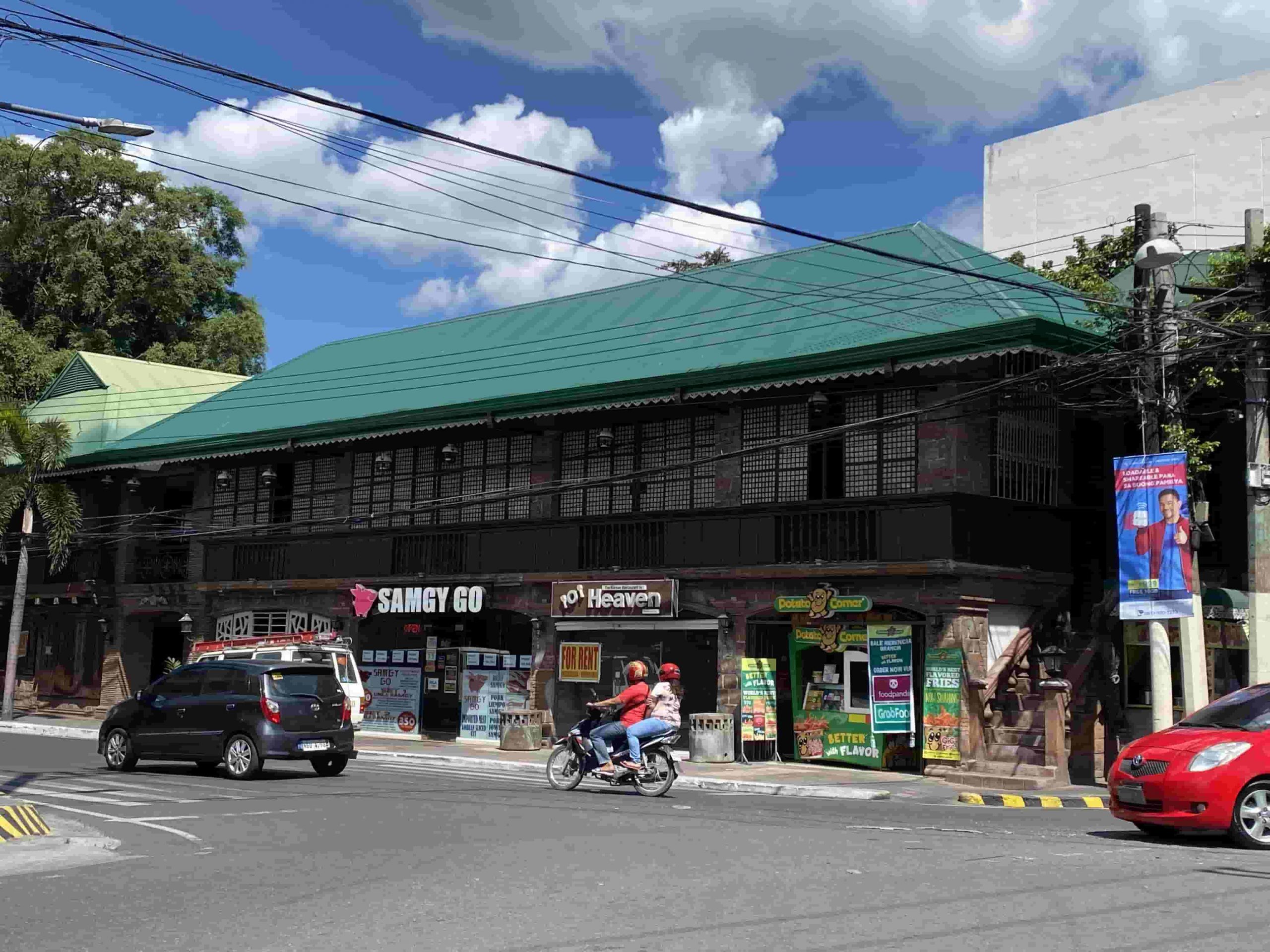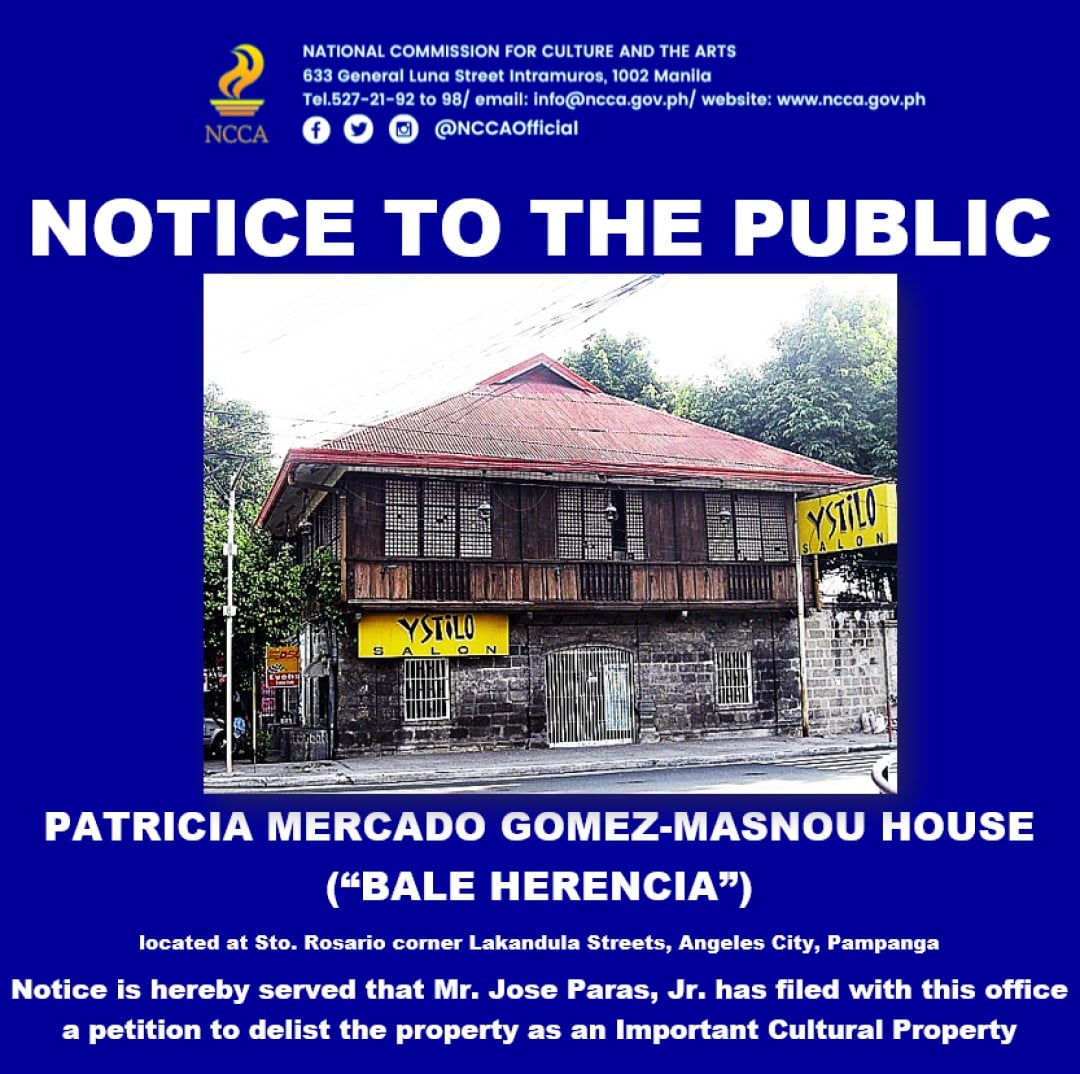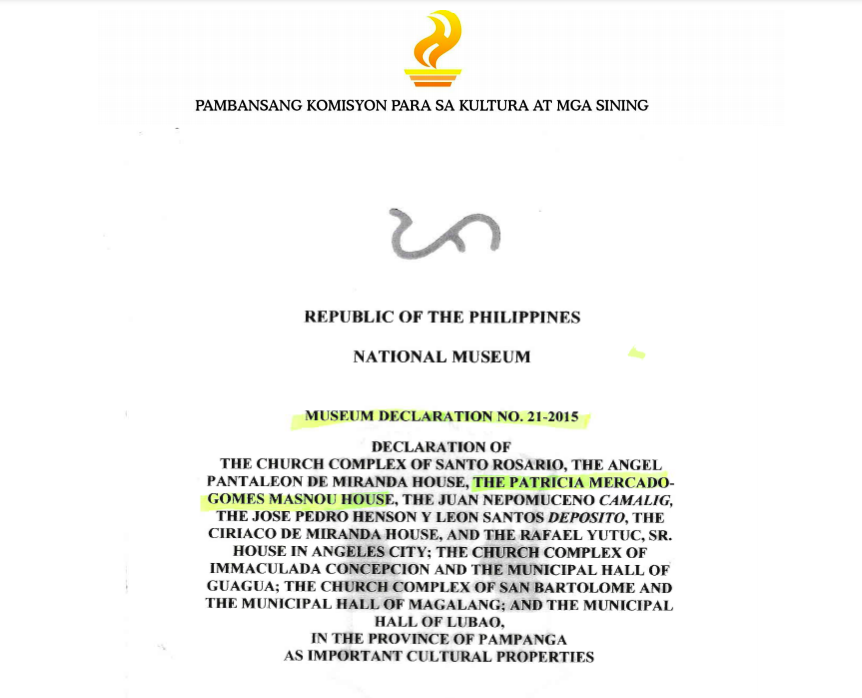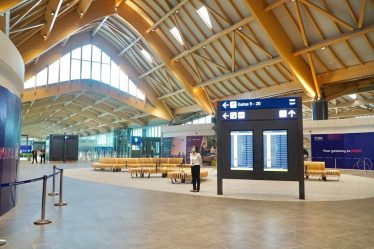
The proprietor says he never asked for the house to be declared as Important Cultural Property (ICP).
If you’ve been to Angeles’ heritage district, you might have passed by an ancestral house full of shops located at the corner of Sto. Rosario and Lakandula streets. It once housed a restaurant, a noodle bar, a laundry, tapsilogan, salon, and continues to be a location for a barbershop, a samgyupsal joint, fries booth and many others.
This is the Patricia Mercado Gomez-Masnou house, also known as the Bale Herencia, one of the Important Cultural Properties (ICP) in the historical part of the city.

On March 24, the National Commission for the Culture and the Arts (NCCA) posted a notice on its Facebook page informing the public about the petition filed by its owner, Mr. Jose Paras, Jr., to delist the property as an ICP.
Here are the reasons cited by Mr. Paras as indicated in the said NCCA notice:
- The owner was caught by surprise when the NMP declared and listed the property as an ICP in 2015;
- The declaration was unilaterally and arbitrarily done without the owner being afforded his constitutional right to proper notice and due process;
- The procedures outlined in Section 8 of Republic Act 10066 were not properly observed and followed;
- The owner himself never initiated any legal step or action to declare the said proper;
- According to the petitioner (owner of the property), out of the original floor area of the property, only 15% thereof remains intact while the rest has been remodeled and renovated.
Persons affected by the said petition were given a chance by the NCCA to file their written support or opposition until April 30, 2021. A reliable source says there are several letters submitted to their office as of this writing.
A houseful of history

According to historical accounts from Museo Ning Angeles, Bale Herencia was built by Padre Guillermo Gomez Masnou, OSA in 1860 during his stay in Angeles as the parish priest. When the Spanish Augustinian friar was assigned to Spain, he left the property to his mistress Doña Patricia Mercado of Sto. Tomas, Pampanga. Masnou and Mercado had six children.
When Doña Patricia died in 1900, the house was transferred to their daughter Doña Maria “Mariquita” Teodora-Gomez who opened a catechism school at the house’s ground floor before the 1896 Philippine revolution.
Here’s a timeline of its transformation:
1901 – The ground floor was rented by American Thomasite teachers, John Osborn and Marion Huff, and was made a public school.
1954 – Doña Mariquita died and the house was inherited by his son Francisco G. Santos. He put up an office on the second floor for his insurance business and the first automobile dealership in the town. The ground floor was rented by the Bureau of Land Transportation and made an office.
1965 – Santos died and the house was inherited by his son Francisco Jr., also known as Paquiting.
1986 – Paquiting sold Bale Herencia to Jose G. Paras Jr. and restoration began.
ICP declaration

In 2015, the National Museum of the Philippines declared Bale Herencia as an Important Cultural Property (ICP) by virtue of the Museum Declaration No. 21-2015. Also declared as ICPs are the Santo Rosario Church Complex, Angel Pantaleon de Miranda House, the Juan Nepomuceno Camalig, Jose Pedro Henson Y Leon Santos Deposito, the Ciriaco de Miranda House, and Rafael Yutuc Sr. House in Angeles City.
The MD No. 21-2015 also included the church complex of Immaculada Concepcion and the municipal hall in Guagua, the church complex of San Bartolome and the municipal hall in Magalang, and the municipal hall of Lubao on the list of ICPs in the Pampanga.
Pursuant to the Republic Act 10066 or the National Cultural Heritage Act of 2009, ICPs cannot be destroyed, demolished, mutilated, or damaged without the consent of the NCCA or filing a petition for the delisting of the property.
While owners are not paid for having their property declared as ICP, they are given necessary assistance for the restoration or renovation of the structure. They may also request technical assistance from the NCCA to determine how to properly protect and preserve their cultural property.
##
Net Dizon contributed to this story.



